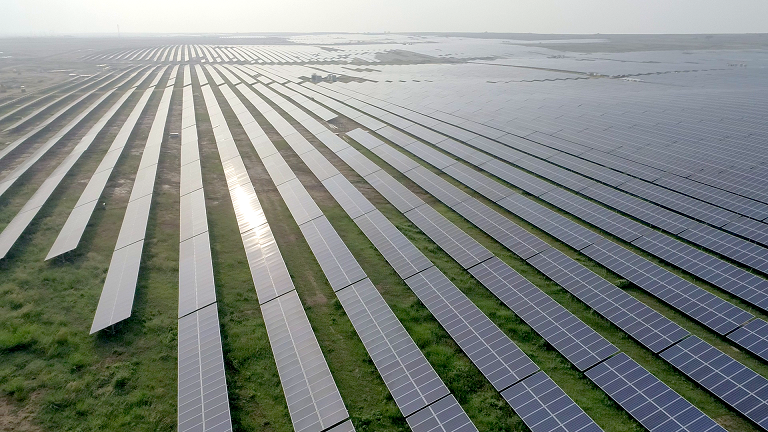India needs strategic investments of over $300 billion to achieve its clean energy capacity target of 500 GW by 2030. With 165 GW of RE generation capacity (including hydro) already in place, the nation is on the right trajectory to meet its goal of meeting 50% of its energy needs through renewables by 2030, says a new report by Arthur D. Little.
To further accelerate adoption, the report recommends that India should focus on developing solar and wind generation capacities by focusing on improving investor confidence, removing barriers to entry of greenfield projects, increasing domestic equipment production, and scaling up rooftop solar and wind project deployment.
“The government needs to introduce policy reforms for facilitating a smoother and faster transition to a market-based model from the existing Power Purchase Agreement (PPA) model for buying electricity. There should be stricter policies to define and improve contractual structures and policies on curtailment of risk and compensation,” states the report.
Increased adoption of green energy with green hydrogen as a carbon-neutral energy storage solution; leveraging technologies such as carbon capture, smart meters, and smart grids with robust data management systems; and enabling efficient price discovery via power exchanges will shape the future of India’s power sector.
To achieve surplus generation, Arthur D. Little’s research proposes a multifaceted approach involving financial support from the government, policy reforms, judicial reforms, and technology integration at the Central, State, and Local levels while targeting the entire value chain.
“India is at the cusp of attaining self-sufficiency in electricity generation and establishing itself as a reliable energy exporter at the global level. Since the power sector is at the heart of India’s economic, political and technological growth, every small step towards improving it would propel the country’s leap towards the US$ 10 trillion economy goal,” said Barnik Chitran Maitra, Managing Partner, Arthur D. Little, India & South Asia.
The impetus to indigenous PV cell production, transition to smart grid, and increased private participation in distribution are key to unraveling India’s true potential in the power sector.
As per the study, India’s electricity consumption is expected to grow at 5.4% annually over the next decade, with annual demand touching 2300 BUs by 2030. However, at the current pace, generation will just reach only 2024 BUs by 2030, highlighting the need for reforms in capacity addition.
This content is protected by copyright and may not be reused. If you want to cooperate with us and would like to reuse some of our content, please contact: editors@pv-magazine.com.









By submitting this form you agree to pv magazine using your data for the purposes of publishing your comment.
Your personal data will only be disclosed or otherwise transmitted to third parties for the purposes of spam filtering or if this is necessary for technical maintenance of the website. Any other transfer to third parties will not take place unless this is justified on the basis of applicable data protection regulations or if pv magazine is legally obliged to do so.
You may revoke this consent at any time with effect for the future, in which case your personal data will be deleted immediately. Otherwise, your data will be deleted if pv magazine has processed your request or the purpose of data storage is fulfilled.
Further information on data privacy can be found in our Data Protection Policy.